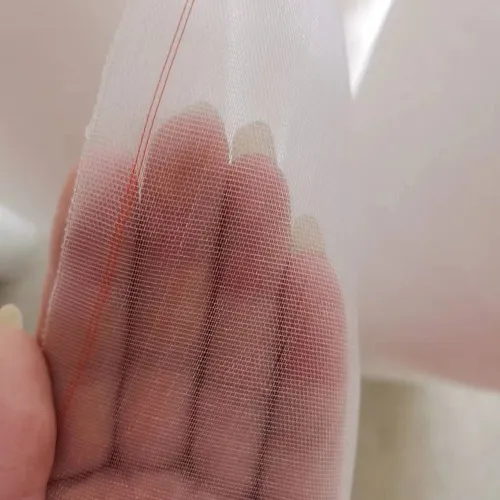-
 Afrikaans
Afrikaans -
 Albanian
Albanian -
 Amharic
Amharic -
 Arabic
Arabic -
 Armenian
Armenian -
 Azerbaijani
Azerbaijani -
 Basque
Basque -
 Belarusian
Belarusian -
 Bengali
Bengali -
 Bosnian
Bosnian -
 Bulgarian
Bulgarian -
 Catalan
Catalan -
 Cebuano
Cebuano -
 China
China -
 Corsican
Corsican -
 Croatian
Croatian -
 Czech
Czech -
 Danish
Danish -
 Dutch
Dutch -
 English
English -
 Esperanto
Esperanto -
 Estonian
Estonian -
 Finnish
Finnish -
 French
French -
 Frisian
Frisian -
 Galician
Galician -
 Georgian
Georgian -
 German
German -
 Greek
Greek -
 Gujarati
Gujarati -
 Haitian Creole
Haitian Creole -
 hausa
hausa -
 hawaiian
hawaiian -
 Hebrew
Hebrew -
 Hindi
Hindi -
 Miao
Miao -
 Hungarian
Hungarian -
 Icelandic
Icelandic -
 igbo
igbo -
 Indonesian
Indonesian -
 irish
irish -
 Italian
Italian -
 Japanese
Japanese -
 Javanese
Javanese -
 Kannada
Kannada -
 kazakh
kazakh -
 Khmer
Khmer -
 Rwandese
Rwandese -
 Korean
Korean -
 Kurdish
Kurdish -
 Kyrgyz
Kyrgyz -
 Lao
Lao -
 Latin
Latin -
 Latvian
Latvian -
 Lithuanian
Lithuanian -
 Luxembourgish
Luxembourgish -
 Macedonian
Macedonian -
 Malgashi
Malgashi -
 Malay
Malay -
 Malayalam
Malayalam -
 Maltese
Maltese -
 Maori
Maori -
 Marathi
Marathi -
 Mongolian
Mongolian -
 Myanmar
Myanmar -
 Nepali
Nepali -
 Norwegian
Norwegian -
 Norwegian
Norwegian -
 Occitan
Occitan -
 Pashto
Pashto -
 Persian
Persian -
 Polish
Polish -
 Portuguese
Portuguese -
 Punjabi
Punjabi -
 Romanian
Romanian -
 Russian
Russian -
 Samoan
Samoan -
 Scottish Gaelic
Scottish Gaelic -
 Serbian
Serbian -
 Sesotho
Sesotho -
 Shona
Shona -
 Sindhi
Sindhi -
 Sinhala
Sinhala -
 Slovak
Slovak -
 Slovenian
Slovenian -
 Somali
Somali -
 Spanish
Spanish -
 Sundanese
Sundanese -
 Swahili
Swahili -
 Swedish
Swedish -
 Tagalog
Tagalog -
 Tajik
Tajik -
 Tamil
Tamil -
 Tatar
Tatar -
 Telugu
Telugu -
 Thai
Thai -
 Turkish
Turkish -
 Turkmen
Turkmen -
 Ukrainian
Ukrainian -
 Urdu
Urdu -
 Uighur
Uighur -
 Uzbek
Uzbek -
 Vietnamese
Vietnamese -
 Welsh
Welsh -
 Bantu
Bantu -
 Yiddish
Yiddish -
 Yoruba
Yoruba -
 Zulu
Zulu
Insect Nets for Sustainable Agricultural Pest Management Solutions
Insect Nets for Agriculture Protecting Crops and Promoting Sustainable Farming
In the realm of agriculture, pest control is a critical component for the successful cultivation of crops. Farmers have employed various techniques over the years to mitigate the damage caused by insects, which can lead to significant financial losses and also affect food security. One innovative and environmentally friendly solution gaining popularity is the use of insect nets. These specialized mesh covers offer a myriad of benefits that not only protect crops but also support sustainable farming practices.
Insect nets are typically made from fine mesh materials that allow sunlight, air, and moisture to penetrate while preventing harmful insects from accessing the plants beneath. The design of these nets varies, but they generally feature a lightweight and durable construction that can withstand various weather conditions. The protective barrier they create is effective against a wide range of pests, including aphids, whiteflies, and beetles, all of which pose significant threats to crop health.
Insect Nets for Agriculture Protecting Crops and Promoting Sustainable Farming
Moreover, insect nets contribute to biodiversity in agricultural landscapes. By safeguarding beneficial insects, such as pollinators and natural predators of harmful pests, these nets help maintain a balanced ecosystem. Pollinators play a crucial role in crop production by facilitating the fertilization of flowering plants. When nets are utilized correctly, they not only keep pests out but also encourage the safe presence of these helpful species, leading to improved yields and healthier crops.
insect net for agriculture

The implementation of insect nets also fosters sustainable agricultural practices. Farmers aiming for organic certification or those simply wanting to adhere to eco-friendly practices can benefit greatly from insect nets. These nets align with organic principles by enabling farmers to produce crops without synthetic pesticides. Furthermore, insect nets can be used in combination with other methods of pest management, such as crop rotation and companion planting, to create an integrated pest management (IPM) approach. This synergy enhances the overall health of the farming system, leading to increased resilience against pests and diseases.
Another significant benefit of insect nets is their ability to extend the growing season in certain climates. By creating a microclimate, these nets protect young plants from temperature extremes and provide a sheltered environment for growth. This becomes particularly advantageous for farmers in regions with harsh weather conditions, allowing them to cultivate crops that might otherwise be susceptible to damage. In areas prone to late frosts or sudden temperature drops, insect nets can serve as a protective cover, encouraging earlier planting and potentially increasing the overall yield.
However, it is essential for farmers to familiarize themselves with the best practices for using insect nets effectively. The proper installation and maintenance of these nets are critical to ensure that they do not inadvertently create an environment conducive to fungal diseases or hinder air circulation around the plants. Regular monitoring is also necessary to check for any signs of pest intrusion and to assess the health of the crops.
In conclusion, insect nets are a versatile and effective tool that offers numerous benefits for modern agriculture. Not only do they protect crops from harmful insects, but they also promote sustainable practices by reducing the reliance on chemical pesticides, encouraging biodiversity, and extending the growing season. As the agricultural community continues to seek innovative solutions to meet the demands of food production while preserving the environment, insect nets stand out as a promising strategy for achieving these goals. By integrating these nets into their farming systems, farmers can ensure healthier crops and contribute to a more sustainable agricultural future.
-
The Sunshade Net Can Block Ultraviolet RaysNewsAug.11,2025
-
Main Application and Technology of Nylon ScreenNewsAug.11,2025
-
Green Anti UV Sunshade Net: The Perfect Combination of Ecological Friendliness and Practical PerformanceNewsAug.11,2025
-
Explore the Sunshade NetNewsAug.11,2025
-
Application and Development of Nylon Screen in Fuel Processing and TreatmentNewsAug.11,2025
-
Application and Advantages of Nylon Screen for AquacultureNewsAug.11,2025











